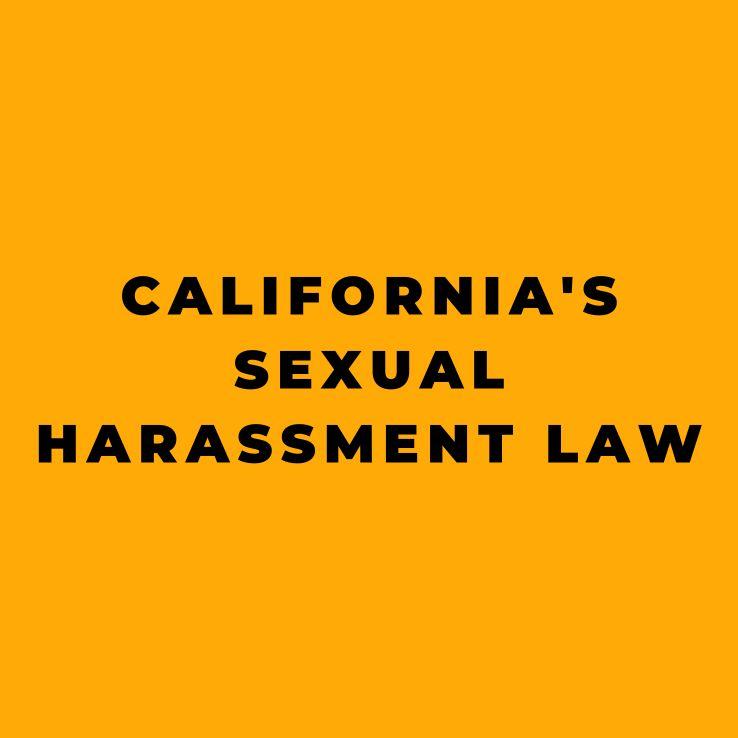A Comprehensive Guide for Victims
Sexual harassment in the workplace is a pervasive issue that affects employees across various industries in California. The state’s laws and regulations provide crucial protection for victims of sexual harassment, outlining their rights and legal recourse. Understanding California’s sexual harassment law is essential for both employers and employees to create a safe and respectful work environment. In this comprehensive guide, we will delve into the key aspects of California’s sexual harassment law, providing insights, examples, and practical advice for victims.
Key Definitions and Concepts
California’s Fair Employment and Housing Act (FEHA) serves as the foundation for the state’s sexual harassment law. Under FEHA, sexual harassment is defined as unwelcome and sexually suggestive verbal or physical advances directed toward an individual in a professional relationship with the harasser. It encompasses a wide range of behaviors and actions that create a hostile, intimidating, and offensive work environment based on an employee’s sex. Importantly, even a single severe incident can be considered sexual harassment under this legal definition.
Forms of Sexual Harassment
Sexual harassment can manifest in various forms, including quid pro quo and hostile work environment harassment. Quid pro quo harassment occurs when a supervisor seeks sexual favors in exchange for providing workplace benefits. On the other hand, hostile work environment harassment involves pervasive or severe unwelcome sexual advances, comments, or conduct that alters the work environment. It’s crucial for individuals to recognize these forms of harassment and understand their rights in such situations.
Legal Recourse and Timelines
Victims of sexual harassment in California have the right to file a complaint with the state’s Civil Rights Department within three years of the harassment. This extended timeline, established by the Stop Harassment and Reporting Extension (SHARE) law, allows victims to seek legal recourse and hold perpetrators and their employers accountable. Successful cases can lead to the recovery of lost wages, pain and suffering, and possibly attorney’s fees, providing victims with the necessary support and compensation.
Recent Laws and Statutes
In response to the #MeToo movement, California has enacted several new laws addressing workplace sexual harassment. These laws include AB 9, which extends the timeline for filing harassment complaints, and SB 1300, which expands anti-harassment protections and makes it easier for employees to prove harassment claims. Additionally, AB 1825 and AB 2053 require sexual harassment prevention training for supervisors and non-supervisory employees in larger companies, further emphasizing the state’s commitment to combatting sexual harassment.
Understanding Workplace Behaviors
It’s essential for individuals to recognize behaviors that constitute sexual harassment. These behaviors can include derogatory comments, unwanted touching, leering, unwanted sexual propositions, and other forms of unwelcome and sexually suggestive conduct. By understanding and identifying these behaviors, employees can take proactive steps to address and report instances of sexual harassment in the workplace.
Legal Rights and Protections
California’s sexual harassment laws provide comprehensive protections for employees, prohibiting harassment based on various protected characteristics, including sex, gender, sexual orientation, gender identity, and more. Employers are obligated to prevent and address harassment in the workplace, and victims have the right to seek legal recourse and hold perpetrators and their employers accountable for their actions. It’s important for individuals to be aware of their legal rights and exercise them when faced with sexual harassment.
Practical Steps for Victims
If you have experienced sexual harassment in the workplace, it’s crucial to take certain practical steps. Documenting the details of the harassment, including dates, times, and specific behaviors, can provide crucial evidence to support your case. Additionally, seeking the assistance of experienced employment attorneys who specialize in sexual harassment cases can ensure that your rights are protected and that you receive the necessary support and legal guidance.
Common Misconceptions and Realities
There are several common misconceptions surrounding sexual harassment, including the belief that it only occurs between male harassers and female victims. In reality, sexual harassment can occur in various professional relationships and can involve individuals of any gender. It’s important to dispel these misconceptions and recognize that sexual harassment is a pervasive issue that requires a comprehensive and inclusive approach to address effectively.
Final Thoughts
California’s sexual harassment law is a crucial framework that provides essential protections for employees and holds perpetrators and employers accountable for their actions. By understanding the key concepts, legal rights, and recent developments in sexual harassment law, individuals can navigate workplace challenges and seek legal recourse when faced with harassment. Employers play a vital role in creating a safe and respectful work environment, and employees have the right to stand up against sexual harassment and seek justice. It’s essential for all individuals to be informed, empowered, and proactive in addressing sexual harassment in the workplace.










